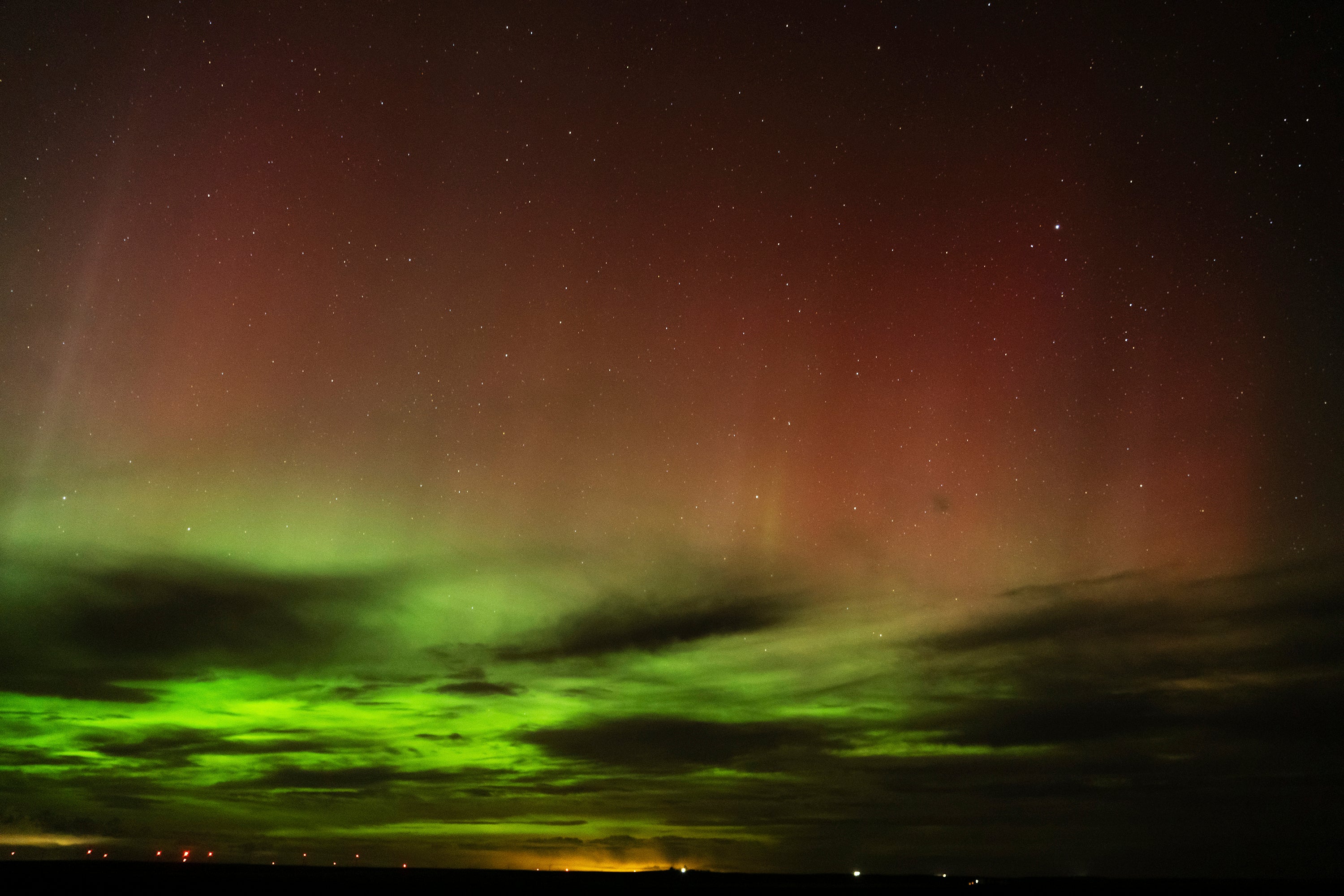Solar storm on Thursday expected to make Northern Lights visible in 17 states
A solar storm forecast for Thursday is expected to give skygazers in 17 American states a chance to glimpse the Northern Lights, the colorful sky show that happens when solar wind hits the atmosphere

Your support helps us to tell the story
From reproductive rights to climate change to Big Tech, The Independent is on the ground when the story is developing. Whether it's investigating the financials of Elon Musk's pro-Trump PAC or producing our latest documentary, 'The A Word', which shines a light on the American women fighting for reproductive rights, we know how important it is to parse out the facts from the messaging.
At such a critical moment in US history, we need reporters on the ground. Your donation allows us to keep sending journalists to speak to both sides of the story.
The Independent is trusted by Americans across the entire political spectrum. And unlike many other quality news outlets, we choose not to lock Americans out of our reporting and analysis with paywalls. We believe quality journalism should be available to everyone, paid for by those who can afford it.
Your support makes all the difference.A solar storm forecast for Thursday is expected to give skygazers in 17 American states a chance to glimpse the Northern Lights, the colorful sky show that happens when solar wind hits the atmosphere.
Northern Lights, also known as aurora borealis, are most often seen in Alaska, Canada and Scandinavia, but an 11-year solar cycle that’s expected to peak in 2024 is making the lights visible in places farther to the south. Three months ago, the light displays were visible in Arizona, marking the third severe geomagnetic storm since the current solar cycle began in 2019.
The Geophysical Institute at the University of Alaska at Fairbanks has forecast auroral activity on Thursday in Alaska, Oregon, Washington, Idaho, Montana, Wyoming, North Dakota, South Dakota, Minnesota, Wisconsin, Michigan, New York, New Hampshire, Vermont, Indiana, Maine and Maryland.
Auroral activity also has been forecast for Canada, including Vancouver.
Light displays are expected to be visible overhead in Milwaukee, Minneapolis and Helena, Montana, and low on the horizon in Salem, Oregon.; Boise, Idaho; Cheyenne, Wyoming; Annapolis, Maryland; and Indianapolis, according to the institute.
The National Oceanic and Atmospheric Administration’s Space Weather Prediction Center said people wanting to experience an aurora should get away from city lights and that the best viewing times are between 10 p.m. and 2 a.m. local time.
Northern Lights occur when a magnetic solar wind slams into the Earth’s magnetic field and causes atoms in the upper atmosphere to glow. The lights appear suddenly and the intensity varies.
A geomagnetic index known as Kp ranks auroral activity on a scale from zero to nine, with zero being not very active and nine being bright and active. The Geophysical Institute has forecast Kp 6 for Thursday’s storm.